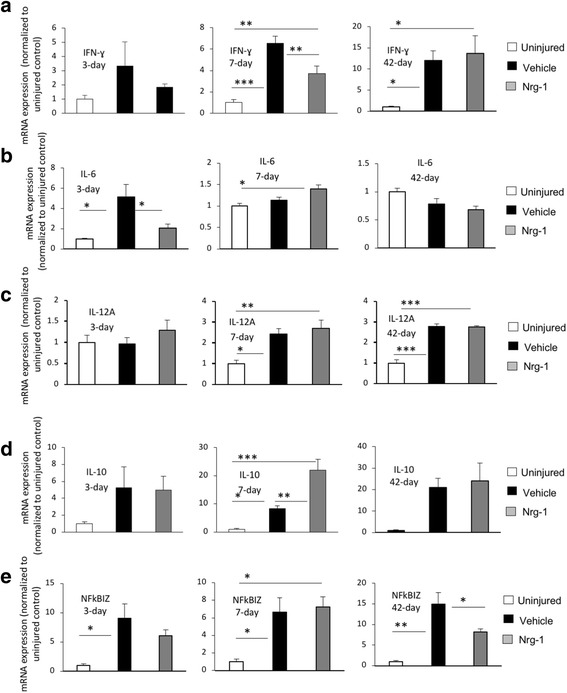Fig. 5.

Nrg-1 treatment regulates inflammatory cytokines in the injured spinal cord. a Transcript analysis of the spinal cord tissue using real-time qPCR released a significant increase in expression of IFN-γ at 7-day post-injury (p < 0.001). Nrg-1 treatment significantly decreased the SCI-induced expression of IFN-γ in the injured spinal cord tissue. b Expression of IL-6 was significantly increased at 3 days post-injury, which was significantly attenuated by Nrg-1 treatment (p < 0.05). No significant difference in IL-6 expression was observed between vehicle- and Nrg-1-treated groups at 7- and 42-day time-points. c IL-12A was significantly increased at 7 days post-injury and remained significantly elevated until 42 days. Nrg-1 had no significant effect on IL-12A expression at any examined time-point. d Transcript levels of IL-10 were significantly increased at 7 days post-injury. Interestingly, Nrg-1-treated animals showed a significantly higher expression of IL-10 compared to the vehicle group at this time-point. No significant change in IL-10 expression was observed at any other examined time-points. e NFkBIZ transcript level was significantly elevated at 3 days and reached its maximum at 42 days post-injury. Nrg-1 treatment significantly attenuated NFkBIZ expression chronically at 42 days post-SCI (N = 4/group/time-point, *p < 0.05, **p < 0.01, ***p < 0.001, one-way ANOVA followed by Holm-Sidak post hoc test)
